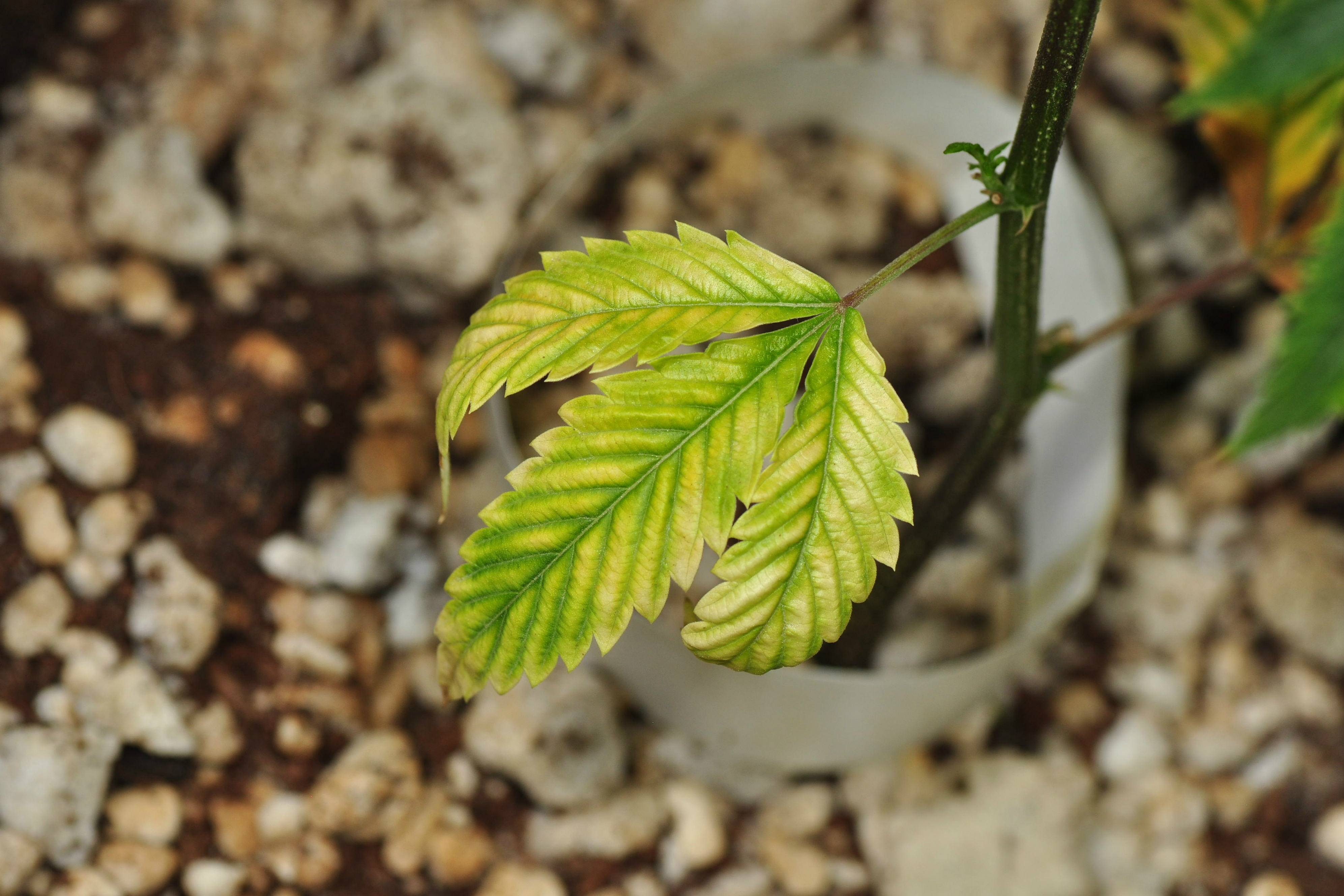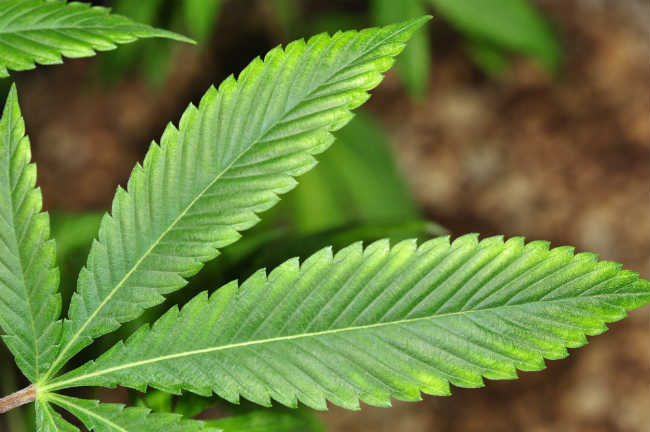You’ve taken great care of your cannabis plants; you water them, feed them nutrient-rich foods, provide the ideal light cycle for their different developmental phases, and prune them just enough to promote light exposure and optimum growth. You’ve done everything right and yet your marijuana plants just don’t look as lively as they should. Specifically, your cannabis plants are showing signs of stress through yellow leaves. Despite all the love and attention you’ve given them, they just aren’t growing into the bountiful beauties you had hoped.
Fear not fellow cannabis cultivators! Just because your cannabis leaves are turning yellow does not mean they are done-for. In fact, there are steps you can take right now to correct yellow cannabis leaves and prevent it from occurring again. But first, let’s discuss why cannabis leaves turn yellow in the first place
Why Cannabis Leaves Turn Yellow

The most common reason plant leaves turn yellow is because of stress. Whether due to inadequate watering, excessive heat, or pest infestations, yellow leaves are a sign of sickly cannabis plants and must therefore be addressed as soon as possible. To understand the science behind this, we must first look at the contents of a typical leaf and its relationship to the plant’s overall health.
Leaves are made up of plant cells. Plant cells are made up of organelles called chloroplasts. These chloroplasts contain pigments that absorb different wavelengths of light. Though most of these pigments are green chlorophyll, other pigments are also involved. Most notable are the yellow and orange carotenoids that hide under the dominant chlorophyll.
The roll of chlorophyll is to absorb sunlight and transform it into energy via a process called photosynthesis. When plants have ample access to resources, chlorophyll thrives. When plants are stressed, however, the chlorophyll begins to degrade revealing the yellow carotenoids below.
Note that carotenoids cannot directly transform light into energy via the photosynthetic pathway and must pass it onto chlorophyll to finish the job. Therefore, while a minor yellowing leaves will not stop photosynthesis, excessive or unaddressed yellowing can either stunt plant growth or kill the whole thing entirely.
Diagnosing and Curing Yellow Cannabis Leaves
If your marijuana leaves are turning yellow, don’t panic! This is just your plants’ way of telling you something is wrong. It is up to you to determine what that is so you can treat the problem without making it worse.
The first thing you should do when cannabis leaves start to turn yellow is to measure the pH of your grow medium (soil, water, rice hulls, expanded clay, etc.). That’s because an improper pH balance – whether too high or too low – can actually block nutrient absorption.
Watering Problems
After measuring and adjusting pH, take a look at your watering schedule. The most common cause of yellow leaves is either over- or under-watering. Plants that are over-watered will have leaves that seem swollen and droopy while under-watered plants (though much less common) will be thin and frail. Poor drainage can also contribute to overwatering so always grow your cannabis in pots with drain holes.
Nutrient Deficiencies

If the yellowing occurs primarily at the base of the plant, the issue is likely a nutrient deficiency. The most common nutrient deficiency in cannabis is nitrogen, though note that excessive nitrogen can also cause yellowing (plus curled, claw-like leaves). If the problem is caused by a deficiency, slowly increase the concentration of your cannabis-specific fertilizer until new growth appears. If the yellowing is caused by excessive nutrients, flush the root system with pure water then add a half-dose of your fertilizer instead. Magnesium deficiency, characterized by a yellowing around the leave’s green veins, is most commonly caused by an improper pH balance. Use magnesium supplements to correct this issue.
Iron deficiency can also cause yellow leaves, though this occurs on new growth only (old leaves remain bright green). Iron deficiencies are also caused by improper pH and can be remedied with iron-fortified fertilizers. When iron is given to deficient plants, the leaves should start to turn green beginning along the edges until the whole leaf is bright green.
Light Burn
If you notice yellowing toward the top of the plant (specifically, nearest the light source), your plants are likely suffering from light burn. Light burn can happen in temperature-controlled environments as easily as those in high-heat if the leaves get too close to the lights. We liken this to getting a sunburn on the ski slopes.
The best way to correct light burn is to move you plant away from your light source, usually between eight and 20 inches depending on the watt and lighting type.
Excessive Temperatures
Temperatures outside of the ideal range of 70 to 80 degrees Fahrenheit also risk discoloration and curl leaves. These oddities are most common in leaves toward the top of the plant and can easily be remedied with a fan (if too hot) or root insulation (if too cold). We also recommend growing plants off a cold cement or tile floor; use a milk crate or stool to raise them off the ground when necessary.
Reasons Why Your Pot Leaves Are Turning Yellow
There are several different reasons why your pot leaves are turning yellow. A variety of factors cause chlorosis, the technical name for a reduction of chlorophyll that results in yellow leaves. This isn’t a definitive list; however, it’s always important to properly diagnose an issue before attempting to solve it. So here are four reasons your weed leaves are yellowing—and how to deal with them properly for a heavier harvest.
Not Enough Light
During photosynthesis, leaves take in light and carbon dioxide (CO2) and convert it into plant energy. Without enough light, leaves will begin to yellow and eventually slow growth to a standstill. Common incandescent house bulbs are severely insufficient, and fluorescent lights must be kept quite close to plants to be remotely effective.
The Fix: Increase the amount of light the plant is getting. This could mean lowering an existing grow light to the proper level above your plants’ canopy or investing in a stronger lighting unit. I highly recommend using HID (High Intensity Discharge) lighting, such as MH (Metal Halide) or HPS (High-Pressure Sodium) lighting for growing pot plants indoors. LED (Light Emitting Diodes) and Compact Fluorescents are a decent, if not perfect, alternative if heat or power usage is an issue.
Over or Under-Watering
Marijuana plants like a wet-dry cycle for their roots. Over- and under-watered plants will droop and soon show the telltale signs of chlorosis.
The Fix: Stop watering over-watered plants and increase watering for under-watered ones. Sounds easy, but it’s one of the most common mistakes beginner growers make. Lift your containers if you can to get an idea of what they feel like when soaked and how much less they weigh when dry.
pH Imbalance
pH or potential hydrogen is the measurement on a scale of 1-14 of the acidity or alkalinity of a soil mix or nutrient solution, with 7 being neutral. Soil pH should be kept between 6-7, while hydroponic pH should be 5.5-6.2.
Fluctuations outside these parameters will lead to nutrient lockout, preventing your roots from being able to take in food. Often misdiagnosed as a deficiency of nitrogen or iron, an undetected pH imbalance can compound problems further when more nutes are added. This creates an over-abundance of plant food in your root zone that your plants cannot absorb.
The Fix: Use a pH meter to measure the level of acidity or alkalinity of your soil and nutrient solution. Adjust using pH up or down accordingly. Bear in mind that these solutions come in concentrated form, so add them sparingly to raise or lower pH incrementally.
Nutrient Deficiency
If all other factors are in balance—light, water and pH—then the most likely culprit is a lack of food for your plants. Nitrogen and iron are the most common deficiencies that cause yellowing leaves, but it could be any number of macro or micronutrients as well.
The Fix: Water with a nutrient solution high in nitrogen. Plant food bottles typically display NPK ratio on the labels. N is for nitrogen, P for phosphorus and K for potassium. Choose the nutrient with a higher number at the beginning. They’re labels will say “Grow” or “Vegetative” as opposed to “Bloom” or “Flowering.” If you decide you have a lack of iron, foliar feed with chelated iron. You should see your leaves greening up within a few days.
